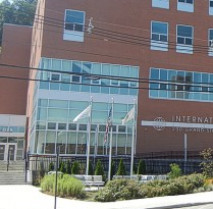Through an on-call contract, Trauner evaluated the validity of a Request for Equitable Adjustment (REA) that was submitted by a project management firm, Jacobs Facilities, Inc. (Jacobs), to the New Jersey School Development Authority (NJSDA).
NJSDA had awarded a contract to Jacobs to provide “Project Management Services for School Facilities Projects.” Jacobs was identified as NJSDA’s Project Management Firm (PMF) to manage renovation and new construction projects at 61 schools (including 35 health and safety projects). Jacobs was required to maintain a regional office to provide its services, which were for the Paterson school district. They were responsible for delivering the successful design and construction of these projects. Jacobs’ fee was $37,404,397. This fee was based on a percentage of estimated construction costs.
Some of the planned projects were constructed, but many others were suspended or cancelled at various stages of the pre-design, design, construction document, or bid phases. The scope of some of the health and safety projects was increased. Overall, Jacobs was required to extend the term of its services.
Jacobs ultimately submitted an REA to NJSDA for three categories of alleged impacts to its work:
- Delays to the Core Team
- Initial Construction Cost Estimate vs. Actual Construction Cost Estimate
- Additional Health and Safety Costs
The total cost of the Jacobs’ REA was $7,569,211.
Jacobs requested additional compensation for three different categories of damages using three different approaches. Therefore, It was necessary for Trauner to develop a unique and customized approach to each separate category.
Delays to the Core Team
The most challenging category to analyze was alleged delays to the “Core Team” during the design phases. Jacobs’ “Core Team” was comprised of personnel that managed the program, design, and preconstruction phases of the projects.
During the design, several changes had to be made due to revised Department of Education requirements and decisions made by the School District. Jacobs alleged that these changes caused delays and disruptions to its work. Jacobs alleged that this forced them to provide additional project management services, including additional design reviews. Over half the costs of Jacobs’s $7.5M REA were dedicated to these delays to the Core Team. Although the NJSDA recognized that Jacobs was entitled to some additional compensation, NJSDA asked Trauner to evaluate Jacobs’s additional compensation to determine whether the numbers were accurate.
Jacobs’ records lacked detail and were difficult to analyze. Many of the additional labor hours claimed were not associated with a specific project. Leveraging our understanding of the design process and our expertise in project and construction management, Trauner was able to analyze and dissect the labor hour reports that Jacobs provided and segregate project-related and non-project-related costs. We developed a labor study that included detailed spreadsheets and charts of Jacobs’s design activity.
As a result of our evaluation and analysis, Jacobs agreed that a significant amount of the costs associated with this category were not supportable. Jacobs reduced its request for added compensation for this category.
Initial Construction Cost Estimate vs. Actual Construction Cost Estimate
Jacobs also sought additional compensation for six projects that progressed or were anticipated to progress into the construction phase, claiming that the original estimates, from which Jacobs’s fee was determined, did not reflect the amended estimates or the actual construction costs. Trauner found that Jacobs’s analysis and documentation showed that a substantial portion of the increases were due to factors such as material escalation or material shortages that would not increase the level of effort necessary for the Jacobs’s construction-phase scope of work.
After this category of damages was totally rejected by Trauner and NJSDA, Jacobs recast its request for this category of damages. Jacobs’ revised request focused on additional costs associated with delays that were beyond its control. To evaluate these delays, Trauner compared the planned and actual construction-phase time periods of the projects that were constructed. As a result of this delay analysis and an analysis of extended costs, NJSDA was able to resolve this damage category with Jacobs for a significantly reduced amount.
Additional Health and Safety Costs
To evaluate the third portion of Jacobs’ REA, Health and Safety Added Costs, Trauner again performed a thorough analysis of project documentation and compared the planned and actual schedules for this phase of Jacobs’s work. Trauner’s evaluation showed that Jacobs did not prove that all the delays that caused additional labor were NJSDA’s responsibility. This category of damages was also resolved for a reduced amount.
At NJSDA’s request, Trauner developed a comprehensive presentation and outlined its expert opinion for NJSDA. We participated in meetings with Jacobs and presented these findings. After Jacobs attended our presentation, they amended their REA and provided additional information regarding their claims.
Armed with our evaluation of this new information, we met again with NJSDA and Jacobs and successfully negotiated a settlement. As noted above, two categories of damages were reduced and one was recast and reduced. With Trauner’s help, NJSDA was able to settle the original claim of $7.5M for $4.2M.


